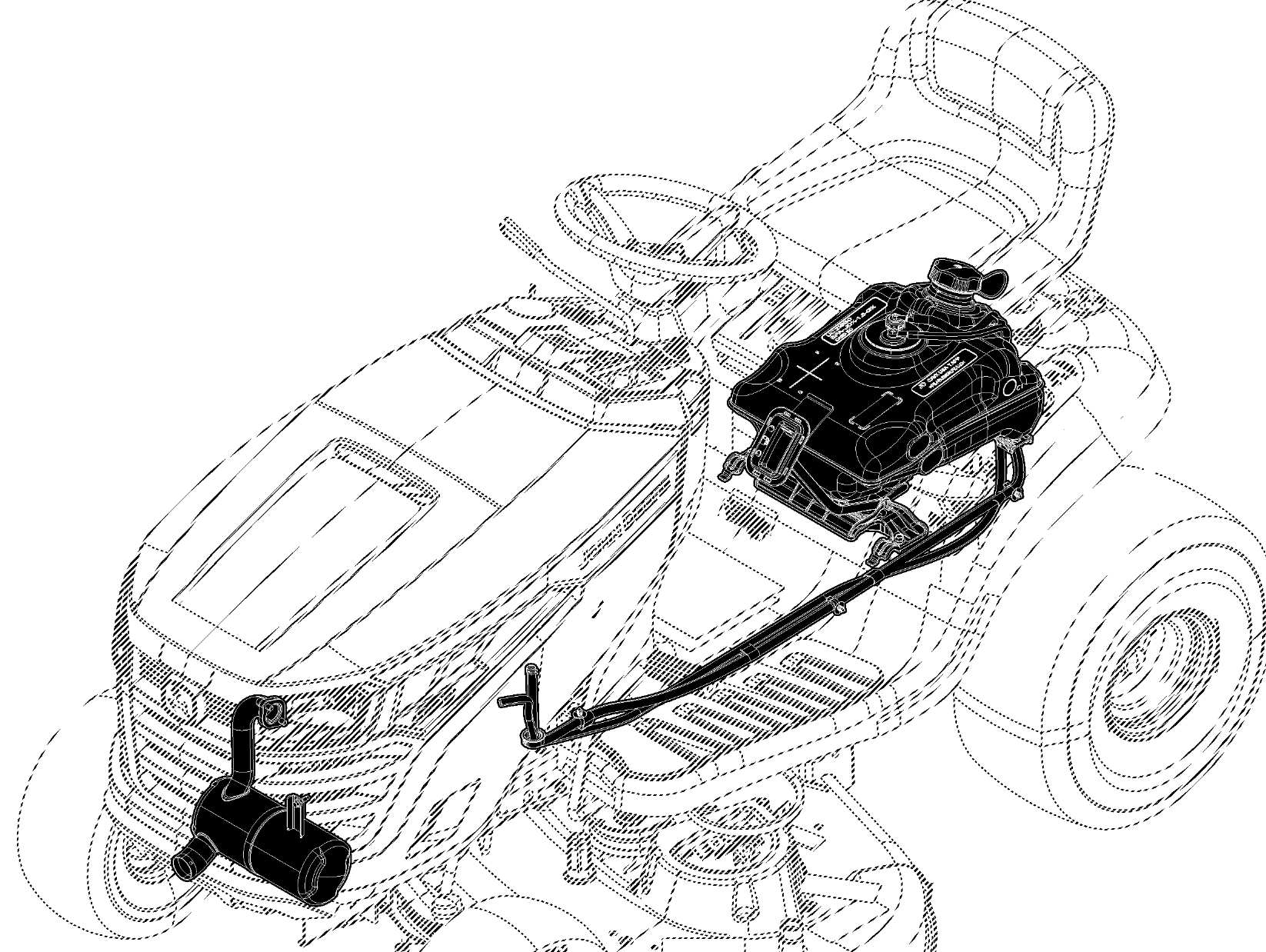The John Deere S100 is a popular choice among homeowners and lawn mowing enthusiasts for its reliability and efficient performance and low entry price. However, like any piece of machinery, it is not without its own set of challenges.
In this article, we will explore the most common problems that John Deere S100 owners may encounter and provide practical solutions to fix them.
Understanding the John Deere S100
Before diving into the potential issues, let’s take a moment to understand this machine. The John Deere S100 is a versatile riding mower designed to make lawn care tasks easier and more efficient. With its powerful engine and durable construction, it can tackle even the toughest of grass-cutting jobs with ease.
Regular Maintenance Requirements
Proper maintenance is crucial for ensuring the longevity and optimal performance of your John Deere S100. Regularly inspecting and cleaning the mower deck is essential to prevent grass clippings and debris from accumulating, which can affect the mower’s performance. Sharpening and replacing blades when necessary will ensure a clean and precise cut every time.
Another important maintenance task is checking tire pressure. Properly inflated tires not only improve the mower’s traction and maneuverability but also prevent excessive wear and tear. Additionally, changing the oil at recommended intervals is vital for keeping the engine running smoothly and efficiently.
When it comes to maintenance, it’s always best to follow the manufacturer’s recommendations. They have designed the John Deere S100 with specific maintenance requirements in mind, based on years of research and testing. By following these maintenance procedures diligently, you can prevent many potential problems from occurring and ensure that your John Deere S100 remains in top-notch condition for years to come.
Identifying Common Problems
When it comes to owning an S100, there are a few common problems that you may encounter. These issues can range from difficulty starting the engine to mowing and cutting problems, as well as transmission and gear issues. In this guide, we will explore each of these problems in detail and provide you with the necessary steps to resolve them.
Starting Issues
One common problem that S100 owners may encounter is difficulty starting the engine. This can be quite frustrating, especially when you’re eager to get your lawn mowing underway. There are several factors that can contribute to this issue, including a low or dead battery, a faulty ignition switch, or a clogged fuel line.
To resolve this problem, it’s important to start by checking the battery voltage. Ensure that it is adequately charged and delivering the necessary power to start the engine. If the battery is fine, the next step is to inspect the ignition switch for any signs of malfunction. Look out for any loose connections or damaged wiring that may be preventing the switch from functioning properly.
In addition to the battery and ignition switch, it’s also crucial to examine the fuel line and filter for any blockages. Over time, debris and sediment can accumulate, obstructing the flow of fuel to the engine. If you notice any blockages, it’s essential to clean or replace the fuel line and filter as necessary. This will help ensure a consistent fuel supply to the engine, improving the starting performance of your S100.
Mowing and Cutting Problems
Another potential problem you may face with your S100 is uneven cutting or poor mowing performance. This can make your lawn look untidy and may even result in patches of grass being missed altogether. There are a few common causes for these issues, including dull or damaged blades, an improperly adjusted cutting deck, or an accumulation of debris in the mower’s chute.
To address this problem, it’s important to regularly inspect and maintain your mower’s cutting blades. Over time, blades can become dull or damaged, leading to inefficient cutting performance. If you notice any signs of wear or damage, it’s crucial to replace the blades promptly. This will ensure that your mower is cutting the grass cleanly and evenly, resulting in a well-manicured lawn.
In addition to blade maintenance, it’s also essential to adjust the cutting deck height properly. Each mower model has a recommended cutting deck height, which ensures optimal cutting performance. By adjusting the deck to the correct height, you can ensure that the grass is being cut at the desired length, preventing any unevenness in your lawn.
Lastly, it’s important to regularly clean out any debris that may have accumulated in the mower’s chute. Grass clippings, leaves, and other debris can obstruct the chute, affecting the grass discharge and overall mowing performance. By clearing out any debris, you can ensure that the grass is being properly discharged, resulting in a more efficient mowing experience.
Transmission and Gear Issues
Transmission and gear problems can significantly impact the performance of your S100 mower. These issues can manifest in various ways, such as sluggish movement, difficulty shifting gears, or even a complete failure to move. There are a few common causes for these problems, including low or contaminated transmission fluid, a broken drive belt, or worn-out gear components.
To address transmission and gear issues, it’s crucial to start by checking the transmission fluid level and quality. Low or contaminated fluid can hinder the proper functioning of the transmission, leading to performance issues. If you notice that the fluid level is low or the fluid appears dirty or discolored, it’s important to top up or replace the transmission fluid as needed. This will help ensure smooth and efficient gear shifting, improving the overall performance of your mower.
In addition to the transmission fluid, it’s also essential to inspect the drive belt for any signs of wear or damage. The drive belt is responsible for transferring power from the engine to the wheels, enabling movement. Over time, the belt can become worn or damaged, affecting its ability to function properly. If you notice any signs of wear or damage, it’s crucial to replace the drive belt promptly. This will restore the proper power transfer and ensure that your mower can move smoothly and efficiently.
If you’ve followed these steps and the transmission and gear issues persist, it may be necessary to consult a professional for further assistance. They will have the expertise and knowledge to diagnose and resolve more complex problems that may be affecting your S100 mower.
Troubleshooting John Deere S100 Problems
Diagnosing Starting Issues
When troubleshooting starting issues, begin by inspecting the battery’s terminals and connections for corrosion or looseness. Clean and tighten them if needed. If the battery is in good condition, check the ignition switch for proper functioning by testing it with a multimeter. Finally, examine the fuel line and filter for any blockages and clean or replace them accordingly.
Resolving Mowing and Cutting Problems
If you are experiencing mowing and cutting problems, inspect the blades for dullness or damage. Sharpen or replace them as necessary. To ensure even cutting, adjust the cutting deck height to the recommended level. Furthermore, regularly clean out any debris from the mower’s chute to promote proper grass discharge.
Fixing Transmission and Gear Issues
When tackling transmission and gear problems, start by checking the transmission fluid level and quality. Top up or replace the fluid if needed. Inspect the drive belt for signs of wear or damage and replace it if necessary. If the problem persists, it is advisable to seek professional assistance to avoid further damage to the mower.
Preventive Measures for Common Problems
Regular Maintenance Tips
To prevent common problems from occurring, follow a regular maintenance routine. This includes cleaning the mower deck after each use, inspecting and replacing blades when they become dull or damaged, checking tire pressure regularly, and changing the oil as recommended by the manufacturer. By staying on top of these maintenance tasks, you can avoid many potential problems.
Proper Usage and Handling
Using the John Deere S100 correctly and handling it with care is essential for preventing problems. Avoid mowing on excessively rough terrain or in wet conditions when possible. Additionally, ensure that you are using the recommended type and grade of fuel, and never exceed the mower’s load capacity. By adhering to proper usage guidelines, you can minimize the risk of encountering issues.
When to Seek Professional Help
Identifying Serious Issues
While many problems can be resolved through DIY troubleshooting and maintenance, some issues may require professional assistance. If you encounter major engine malfunctions, severe transmission problems, or electrical issues you are unable to diagnose or fix, it is highly recommended to consult a reputable John Deere service center. Their expertise and specialized tools will help you tackle complex problems and ensure your lawn mower is running smoothly once again.
Finding a Reliable John Deere Service Center
When searching for a service center, look for one that specializes in John Deere equipment and has a good reputation for providing quality service. Research online reviews, ask for recommendations from other John Deere owners, and inquire about the qualifications and experience of their technicians. By choosing a reliable service center, you can have peace of mind knowing that your John Deere S100 is in competent hands.
By being aware of the common problems associated with the John Deere S100 and following the appropriate troubleshooting and maintenance steps, you can keep your mower in top shape and enjoy the benefits of a well-maintained lawn. Remember, regular care and attention to detail will not only extend the lifespan of your machine but also enhance its performance, making your mowing experience a breeze.

